Like Z Banding
-
Hi Everyone
I’m looking for some help and suggestions to try and eliminate a Z banding like artifact on flat surfaces (shown in the pics). I’m running an AWD HevORT core XY with a Hemera XS Roto extruder on a Duet3D 6HC mainboard with a Pi5 SBC, on 3.6.0-beta.3 firmware.To me it’s not mechanical as the 40mm tube pic shows no evidence of the banding.
What I have tried so far:
Bed heater P.I.D tune, Extruder P.I.D tune, Belt tension balanced, Extruder E-steps checked, Various PA values tried, Wall print speeds from 100-200mms And a few acceleration speeds 7000 – 10000 on outerwalls, all with no variation in frequency.Any suggestion to what might be causing this or what else to try would be much appreciated.
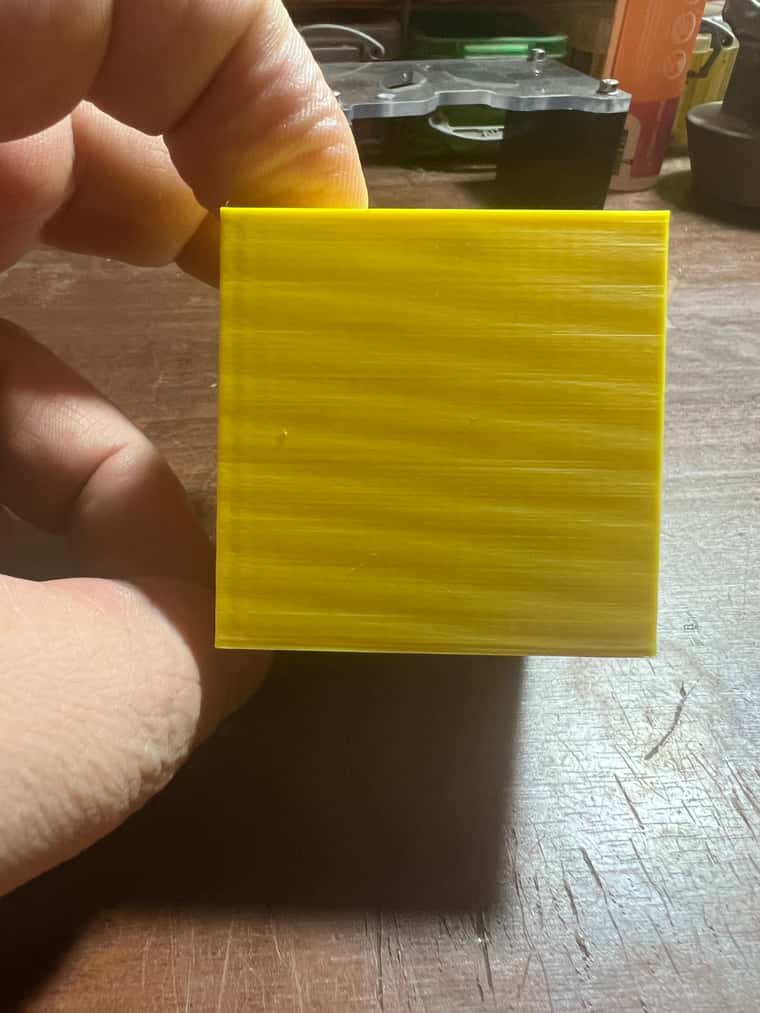
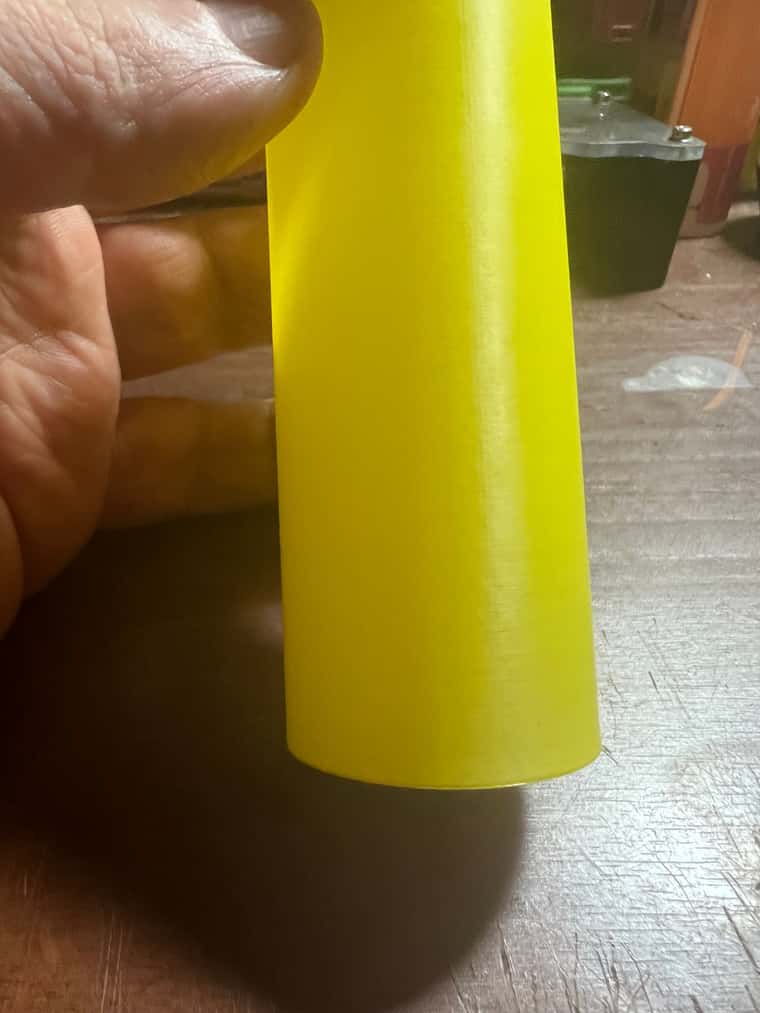
-
@Ce72 I think this is very likely to be an extruder issue. What extruder are you using? I'm guessing it is a dual-drive. Watch these two videos, particularly the second one:
https://www.youtube.com/watch?v=dL6u0UwPJOQ
https://www.youtube.com/watch?v=32dTLRNIYmwPrint this object and see if you get the 'woodgrain' effect: https://mihaidesigns.com/inconsistent-extrusion/
If you get the woodgrain effect, then you'll know if the issue is the extruder. If the lines line up, it's something in your X and Y movement.
If you do get a woodgrain effect, he explains calculating the extrusion distance between artefacts in the second video from about 1:50, which can help pinpoint what's causing the issue. From the look of your print, it looks more like the 'cogging' issue of the large drive gears (rather than cogging on the smaller teeth that push the filament), and varying the extruder teeth pressure (usually reducing pressure) may help.
Ian
-
@droftarts Hi Ian, thank you for your response, and also for the great links. After extensive trawling I also found a helpful video from MirageC pointing me in the same direction.
I'm using the E3D HemeraXS Revo extruder so there's not a lot of wiggle room for modding or testing. I have odered a new set of drive gears to see if that helps, the only other thing I can think of is to try and make an undriven idler for the tension arm. But hopefully it won't come to that.
Once again thank you for the input.
-
@Ce72 That is VERY interesting, I use HemeraXS's on multiple machines and have never seen that behaviour before. Just to double check, as your are using the HevORT printer, are you using the wobbleX decouplers?
I'm seeing two artefacts, one if the diagonal lines, the other looks like a repeated Z band patten. -
@Notepad Hi, I built my HevORT 3 years ago this year. Yes, I have been using the WobbleX rings for over a year now. I have even upgraded to the experimental 2.6 (I think) version on the wiki, that I remodelled to suit my setup, I have added the pic so you can see what I mean, But I did this upgrade back in September along with going to AWD and everything has been working fine.
To be honest I have only had this issue start around Christmas when I had to strip the bedplate off to reapply the bed heater as the old adhesive had started to let go. I have done multiple P.I.D tunes to try and see if that eliminates the problem and I have been chasing my tail ever since.
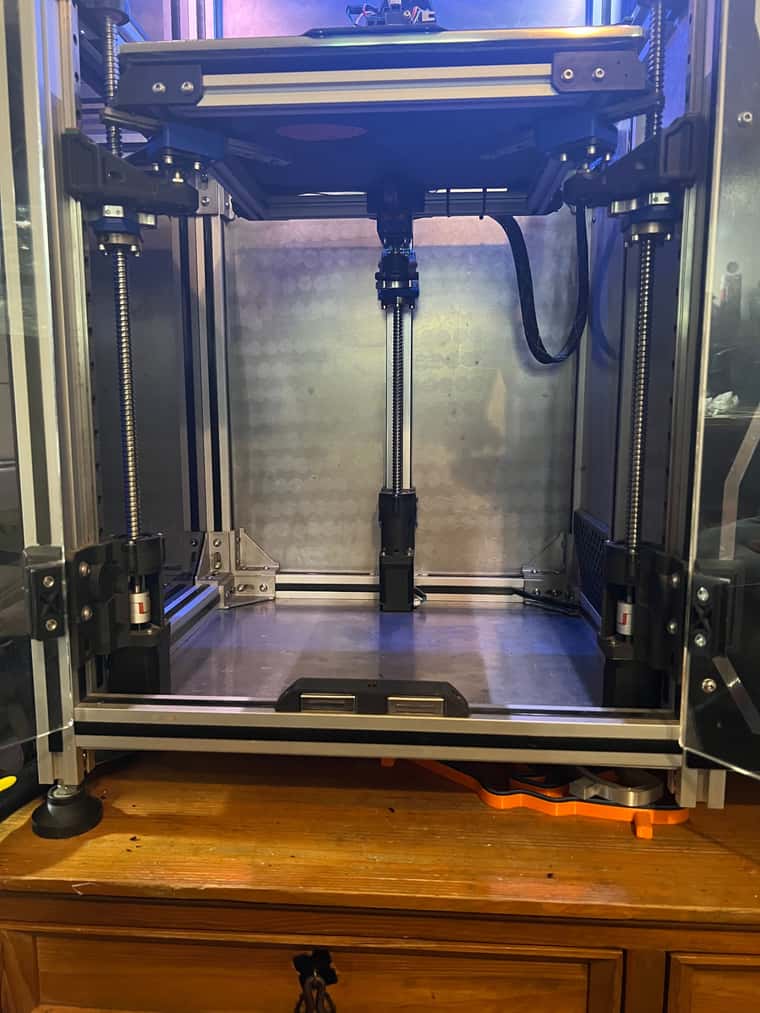
-
I have replaced the drive gears in the extruder and it has made no difference the the pattern, I'm at a bit of a lose. in what to try next if it was down to mechanical Z wobble my thinking is that the pattern would also be on the tube and not just the cube.
Any suggestions or input would be greatly appreciated.
-
@Ce72 Did you try printing the 'woodgrain' tower?
Ian
-
@droftarts I did print the tower but it was with setting that I have been running 0.25mm nozzle and 0.125 layer height and there was hardly any blemishs, so I didn't mention it
 Also since my last post about refitting the heater I have rechecked my wiring connections and run another PID tune.
Also since my last post about refitting the heater I have rechecked my wiring connections and run another PID tune.I will change to a 0.4mm nozzle and rerun the test with the recomended setting of 0.65mm walls and 0.3 layer height in vase mode. then I will post a pic to show my findings.
-
@droftarts HI Ian, thank you for giving me a nodge to do the woodgrain test properly.
I changed to the 0.4mm nozzle and setup the test for 0.65mm outer wall thickness, 0.3mm layer height at 20mms in vase mode. And this is what happened:
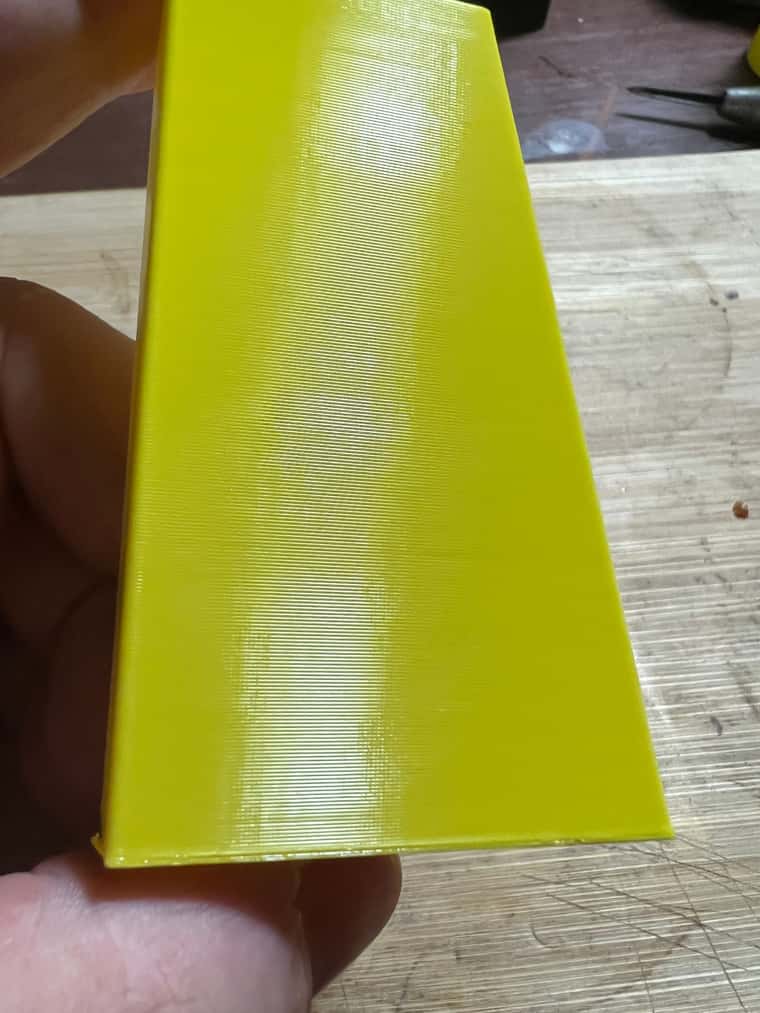
Apart from the slight VFA’s from the slow feed, it is pretty much spot on.
I’m starting to wonder if this is more of a slicer issue as I seem to have the problems when printing models not in vase mode, All along I have been using the same Gcode program for the cube to use as a baseline, which may have been misleading me.
I’ll try using 2 different slicers on the same model to compare the results. I have been using Orca for a while, but I still have a working profile in S3D. I will post up my results
-
@Ce72 Back to confusion 2 prints, 2 slicers, same settings and 2 results
Using Orca slicer 0.2mm layer height
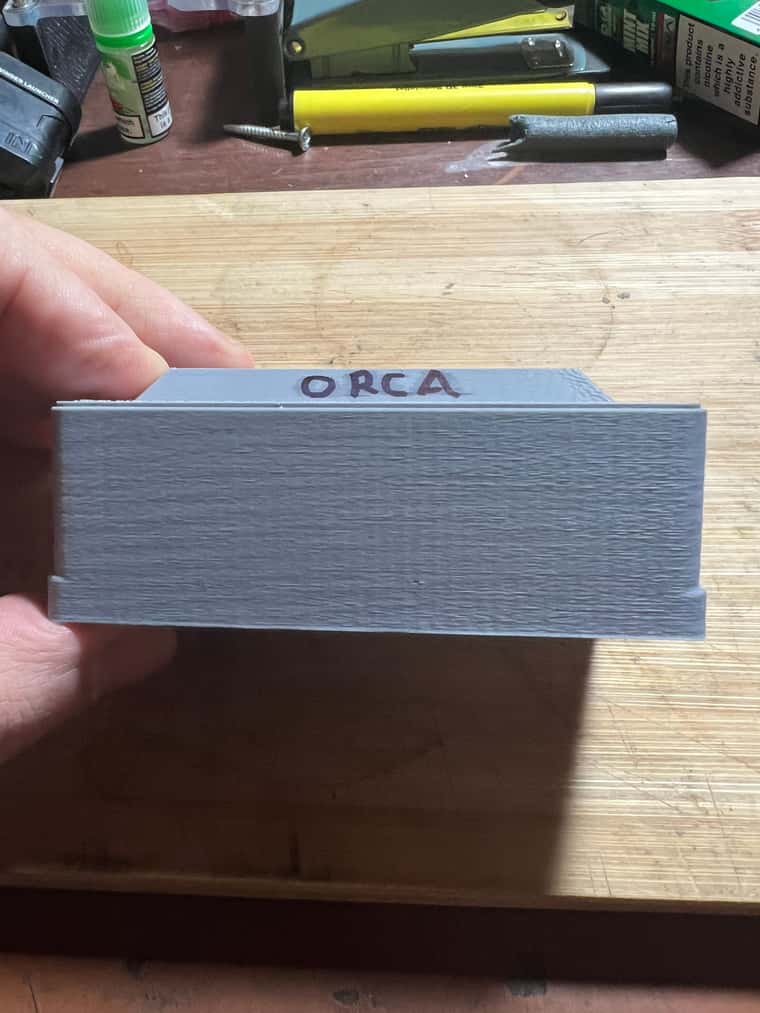
Using S3D slicer 0.2mm layer height
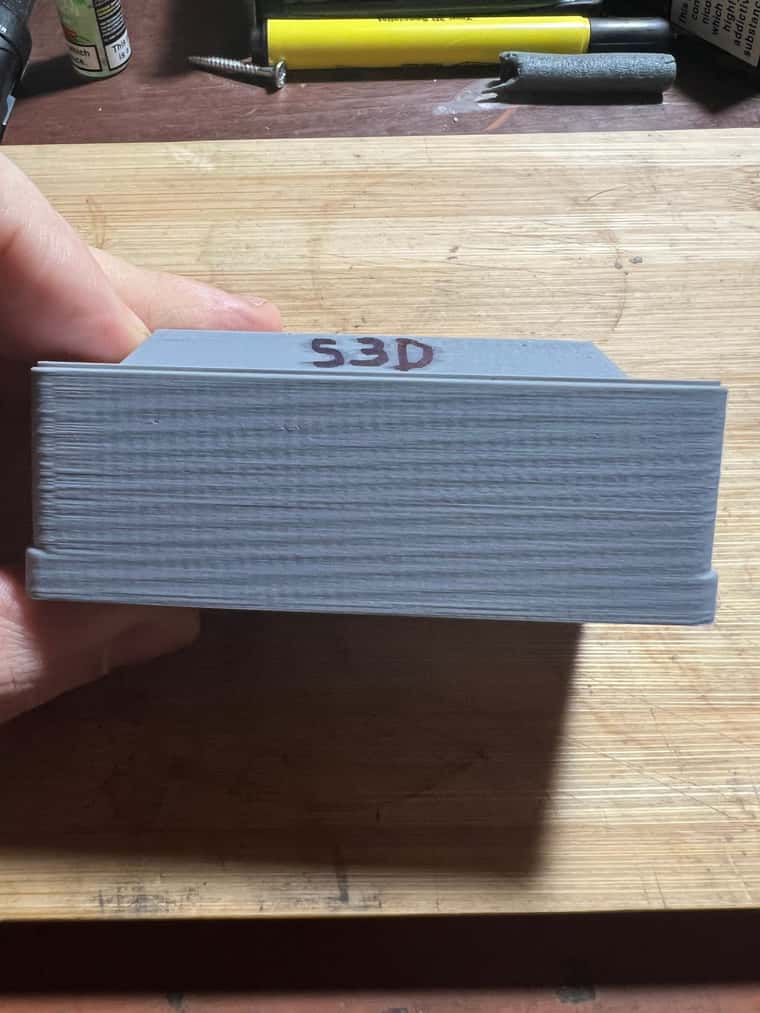
-
@Ce72 Some things come to mind seeing this. Because the slicer seems to have an impact on the visual artefact. it could be related to extrusion multiplier on a material basis. whilst the print settings might be the same, there might be small differences in the material settings for each slicer.
Its weird that the woodgrain test appears to be normal and and then your next two prints have this weird artefact.
One noticeable difference between the woodgrain vs the two gray prints, is it looks like the grey prints are larger in XandY.
This does mean we cannot exclude the Z axis from this behaviour, as it could be a byproduct of the bed mesh compensation (though the chance of this is unlikely)Unfortunately I couldn't tell from the photos of the grey prints if the angle of the banding changes when the model becomes slightly thinner. that would be a strong indication that the problem is extruder related instead of the motion system.
-
@Notepad said in Like Z Banding:
Its weird that the woodgrain test appears to be normal and and then your next two prints have this weird artefact.
IMHO, the difference is vase mode versus solid. Might be related to PA-settings? They don't apply in vase mode...
-
@Notepad I might be going a bit off topic for the forum section, but this banding issue has only started since I refixed my beds Keenovo silicon heater with RTV. When I did this there was no signs of damage on the heater but there were areas of the heater not in contact when the bed where the adhesive had let go. I’m no electrician
 I have checked the resistance of my heater with a multimetre, and it read 67.2 ohms, working on UK mains being 240v with a 750w heater I worked out it should be around 76.8 ohms. Is this within margin of error?
I have checked the resistance of my heater with a multimetre, and it read 67.2 ohms, working on UK mains being 240v with a 750w heater I worked out it should be around 76.8 ohms. Is this within margin of error?I carried out a number of M303 PID tunes on the heater letting it return back to room temperature each time. And got these results.
Warning: heater behaviour was not consistent during tuning on all tests
M307 H0 R0.845 K0.256:0.000 D5.16 E1.35 S1.00 B0
M307 H0 R0.854 K0.400:0.000 D5.40 E1.35 S1.00 B0
M307 H0 R0.862 K0.264:0.000 D5.29 E1.35 S1.00 B0
M307 H0 R0.859 K0.301:0.000 D4.90 E1.35 S1.00 B0I’m wondering if these variations are signs of my heater dying? And could this be the route cause of the banding issue only showing up on the longer model prints rather than the short test prints?
Any thoughts??
-
@o_lampe I have tried a few different PA settings from 0.03 upto 0.08 and it had very little to no effect on the banding unfortunatly.
-
@Ce72 There is a possibility it could be the relay controlling the heater bed. If its an AC relay, they do tend to fail deadly if they get to hot
-
@Notepad Thank you for posting back to me, I am not fully clued up with electronics, but my understanding is from what your saying is that the heater seems ok, but it could be the relay starting to fail causing the control fluctuation.
I am not sure what you mean by fails deadly, I take it you mean open circuit? I am glad to say when I built the machine, I grounded both the metal bed plate and the relay down to the plug’s earth pin and not just the frame. I know not to take risks with the mains.
The pic shows the relay I am using to clarify, and if that is the case I will replace it before switching the printer on again.
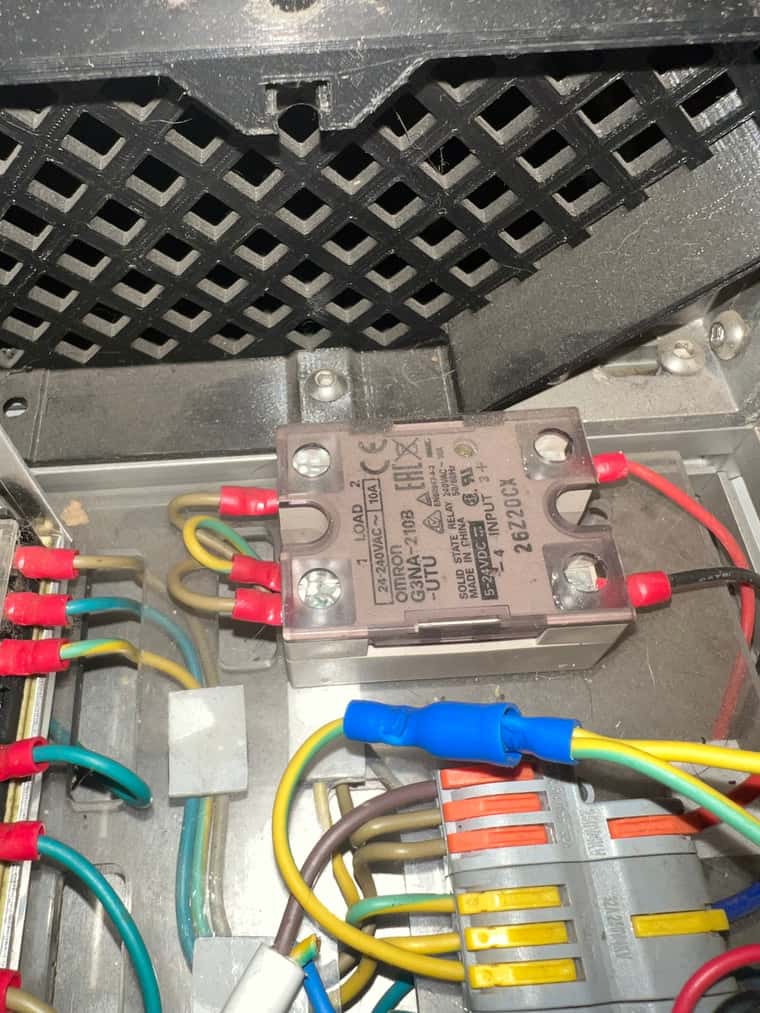
-
@Ce72 Can you post your config.g?
Ian
-
@droftarts I know theres a better way of doing this but I'm not sure how
; Configuration file for Duet 3 (firmware version 3) ; executed by the firmware on start-up ; ; reconfigured HevORT V1 file for V2.8 on Sat Sep 14 2024 ; ; Port Layout ; Mainboard Ext board ; 0.0 Extruder 1.0 Front Left ; 0.1 Y Back Left 1.1 Rear Middle ; 0.2 Y Front Right 1.2 Front Right ; 0.3 X Back Right ; 0.4 X Front Left ; ; General preferences G4 S2 ; wait for expansion boards to start G90 ; send absolute coordinates... M83 ; ...but relative extruder moves M550 P"HevORT" ; set printer name M669 K1 ; select CoreXY mode ; ; Network ;M552 P0.0.0.0 S1 ; enable network and acquire dynamic address via DHCP ;M586 P0 S1 ; enable HTTP ;M586 P1 S0 ; disable FTP ;M586 P2 S0 ; disable Telnet ; ; Drives M569 P0.0 S1 ; physical drive 0.0 goes forwards Extruder M569 P0.1 S1 ; physical drive 0.1 goes forwards Y1 stepper M569 P0.2 S1 ; physical drive 0.2 goes forwards Y2 stepper M569 P0.3 S1 ; physical drive 0.3 goes forwards X1 stepper M569 P0.4 S1 ; physical drive 0.4 goes forwards X2 stepper M569 P1.0 S1 ; physical drive 1.0 goes forwards Z1 stepper on extension board M569 P1.1 S1 ; physical drive 1.1 goes forwards Z2 stepper on extension board M569 P1.2 S1 ; physical drive 1.2 goes forwards Z3 stepper on extension board M584 E0.0 X0.3:0.4 Y0.1:0.2 Z1.0:1.1:1.2 ; set drive mapping M906 X2096. Y2096. Z1179. E995.6 I30 ; set motor currents (mA) and motor idle factor in percent M917 X70 Y70 Z80 E70 ; Set motor standstill current reduction ;M970 X0 Y0 Z0 E0 ; Enable/disable phase stepping ;M970.1 X1000.0 Y2000.0 Z1000.0 E1000.0 ; Configure phase stepping velocity constant ;M970.2 X50000.0 Y50000.0 Z50000.0 E50000.0 ; Configure phase stepping acceleration constant M84 S30 ; set idle timeout M671 X-28.0:168.35:364.7 Y40.0:348.8:20.0 S10. ; Z leadscrew positions M350 X16 Y16 Z16 E16 I1 ; configure microstepping with interpolation M92 X80.1 Y80.1 Z800.00 E394.00 ; set steps per mm M203 X30000.00 Y30000.00 Z250.00 E1200.00 ; set maximum speeds (mm/min) M201 X20000.0 Y20000.0 Z50.00 E500.00 ; set accelerations (mm/s^2) M204 P10000. T10000. ; Max Acceleration M566 X900. Y900. Z60. E120. ; set maximum instantaneous speed changes (mm/min) M205 X15. Y15. Z1. E2. ; set working instantaneous speed changes (mm/sec) M572 D0 S0.080 ; Preasure advance ; ; Axis Limits M208 X0 Y0 Z0 S1 ; set axis minimium M208 X285.0 Y295.0 Z340 S0 ; set axis maximium ; ; Endstops M574 X1 S1 P"!io0.in" ; configure active-high endstop for low end on X via pin !io0.in M574 Y1 S1 P"io1.in" ; configure active-high endstop for low end on Y via pin !io1.in ; ; Z-Probes ; Probe 1 BL Touch M950 S0 C"io7.out" ; create servo pin 0 for BLTouch M558 K0 P9 C"^io7.in" H10 F300:120 T6000 ; set Z probe type to bltouch and the dive height + speeds ;M558 H30 ;*** Remove this line after delta calibration has been done and new delta parameters have been saved G31 P500 X0. Y-35.09 Z1.65 ; set Z probe trigger value, offset and trigger height ; Probe 2 Scanning Z probe M558 K1 P11 C"120.i2c.ldc1612" F36000 T36000 ; configure SZP as probe 1, type 11, on CAN address 120 G31 K1 Z2.15 Y27. ; define probe 1 offsets and trigger height M558.2 K1 S16 R134773 ; set drive current and reading offset M308 A"SZP coil" S10 Y"thermistor" P"120.temp0" ; thermistor on coil M955 P120.0 I56 ; Add accelerometer on SZP with CAN address 120 and specify orientation M557 X10.0:275.0 Y35.0:285.0 S10 ; define mesh grid ; ; Heaters & Sensors M308 S0 P"temp0" Y"thermistor" T100000 B3950 ; configure sensor 0 as thermistor on pin temp0 BED TEMP M950 H0 C"out0" T0 ; create bed heater output on out0 and map it to sensor 0 M307 H0 R0.859 K0.301:0.000 D4.90 E1.35 S1.00 B0 ; BED HEATER PID SETTINGS M140 H0 ; map heated bed to heater 0 M143 H0 S135 ; set temperature limit for heater 0 to 120C M308 S1 P"temp1" Y"thermistor" T100000 B4725 C7.06e-8 ; configure sensor 1 as Termistor on pin temp1 EXTRUDER TEMP M950 H1 C"out1" T1 ; create nozzle heater output on out1 and map it to sensor 1 M307 H1 R5.007 K0.417:0.603 D2.71 E1.35 S1.00 B0 V23.6 ;M307 H1 R5.395 K0.416:0.839 D2.53 E1.35 S1.00 B0 V23.7 ; PID Tune M143 H1 S300 ; set temperature limit for heater 1 to 300C M308 S2 A"Chamber" P"temp2" Y"thermistor" T100000 B4138 ; configure sensor 0 as thermistor on pin temp2 CHAMBER TEMP SENSOR M308 S3 A"CPAP Pump" P"temp3" Y"pt1000" R2200 ; configure sensor 0 as thermistor on pin temp3 CPAP TEMP SENSOR M308 S11 Y"mcu-temp" A"MCU" ; defines sensor 10 as MCU temperature sensor MCU TEMP SENSOR ;M308 S12 Y"drivers" A"Stepper Drivers" ; defines sensor 11 as stepper driver temperature STEPPER TEMP SENSOR ; ; Fans M950 F0 C"1.out3" ; create fan 0 on pin out3 on Expansion board PART COOLING FAN M106 P0 S0 X180 H-1 ; set fan 0 value. Thermostatic control is turned oFF M950 F1 C"out7" Q250 ; create fan 1 on pin out7 and set its frequency EXTRUDER FAN M106 P1 S1 H1 T45 ; set fan 1 value. Thermostatic control is turned on M950 F2 C"!out5+out5.tach" Q250 ; create fan 2 on pin out5 and set its frequency MCU COOLING FAN M106 P2 H11 T45:60 ; set fan 2 value. Thermostatic control is turned on M950 F3 C"!out6+out6.tach" Q250 ; create fan 3 on pin out6 and set its frequency CHAMBER FAN M106 P3 H2 T30:35 ; set fan 3 value. Thermostatic control is turned on ; ; Tools M563 P0 D0 H1 F0 ; define tool 0 G10 P0 X0 Y0 Z0 ; set tool 0 axis offsets G10 P0 R0 S0 ; set initial tool 0 active and standby temperatures to 0C ; ; Axis Correction M556 S80 X0. Y0. Z0. ; Axis Correction ; ; Input shaping M593 P"mzv" F45.0 S0.1 ; use ZVD input shaping to cancel ringing at 67.0Hz ; Shaping Options "none" "zvd" "zvdd" "zvddd" "mzv" "ei2" "ei3" ;M593 P"none" ; disable input shaping ; ; Custom settings are not defined ; LED Settings ; ;M150 X1 ; Set LED Type ( PRE 3.5.0 FORMAT) M950 E0 C"led" T1 U32 ; create a RGB Neopixel LED strip on the LED port (3.5.0 FORMAT) M150 R255 U255 B255 P200 S10 F1 ; Left side White M150 R31 U81 B255 P220 S11 F1 ; Blue back M150 R255 U255 B255 P200 S10 F0 ; Right side white ; M950 E1 C"io2.out" T1 U10 ; create a RGB Neopixel LED strip in Electric box on the io2 port M150 R255 U255 B255 P200 S10 F0 ; Left side White ; ; Miscellaneous T0 ; Call T0 M501 ; load saved parameters from non-volatile memory -
@Ce72 "Fail Deadly" is simply just the opposite of "Fail Safe". A failsafe relay would open the circuit stopping power from transferring. These SSR style relays all tend to faildeadly if they get too hot. Normally these relays run quite cold, but if its getting towards the EOL, there is a chance its accidently keeping the power on for too long causing heat based pulsing, similar to BangBang z banding. This would explain your PID tuning inaccuracies.
Its very unlikely as these relays are pretty robust, But I have had 2 personally die on me even when they are joined with the officially recommended W70 Passive Heatsink. -
@Notepad Well, I have now changed the SSR, but I am still getting some fluctuation, but at least some are fault free. Here are the results:
M307 H0 R0.863 K0.260:0.000 D5.37 E1.35 S1.00 B0 XXXXXX
M307 H0 R0.875 K0.265:0.000 D5.36 E1.35 S1.00 B0 XXXXXX
M307 H0 R0.874 K0.346:0.000 D5.72 E1.35 S1.00 B0
M307 H0 R0.856 K0.307:0.000 D4.85 E1.35 S1.00 B0
M307 H0 R0.852 K0.301:0.000 D5.32 E1.35 S1.00 B0 XXXXXXXXXXXX = Warning: heater behaviour was not consistent during tuning
My next step of thinking down this rabbit hole of fluctuation is, where I have used RTV to refix the silicon heater could the layer be too thick or uneven (It’s not easy stuff to work with) causing a slow transition of heat, resulting in a slow reaction that the PID loop is struggling with?
Does anyone know of anywhere in the UK, where I can get a good 330 x 330mm 240v high temp (I print a lot of ABS and the like) silicon heater. At a good price and quick delivery? As even Keenovo has started using a NTC 100K thermistor on there heaters which from what I understand can be a pain to setup and not that great for the higher temps.